NATION NOW
Where the nation's nuclear arsenal is developed, supported
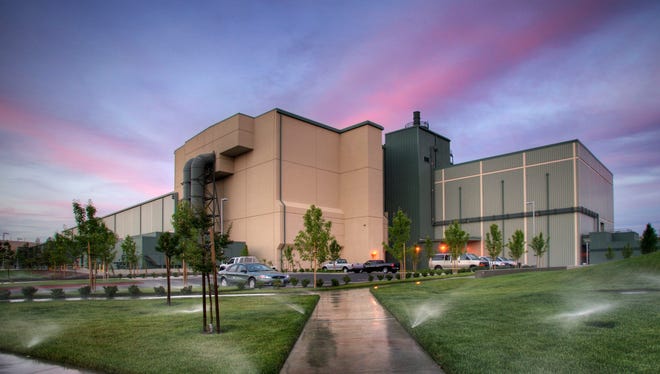
The National Ignition Facility at Lawrence Livermore National Laboratory in Livermore, Calif., won the Project Management Institute's 2010 Project of the Year award for creating the first laser expected to achieve nuclear fusion ignition in a laboratory setting. But as of 2017, it and other labs worldwide have not achieved the goal.
Lawrence Livermore National Laboratory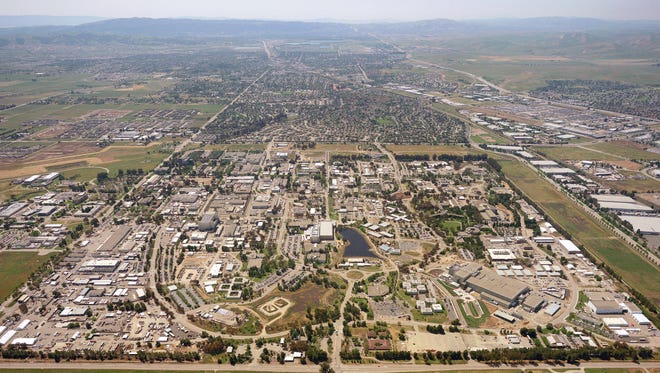
Lawrence Livermore National Laboratory in Livermore, Calif., which was founded by the University of California in 1952, has grown to a 1-square-mile campus with almost 6,000 employees. A private contractor consortium now operates it.
National Nuclear Security Administration Via Flickr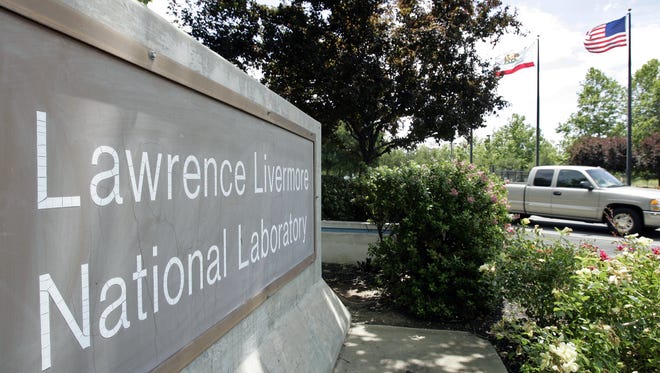
In spite of four violations in 2013 that the federal government considered severe enough to cause workers' injury or death, Lawrence Livermore National Laboratory's private contractor consortium received 87% of its potential profits, more than $40 million. The entrance to the complex is shown May 28, 2008.
Paul Sakuma, AP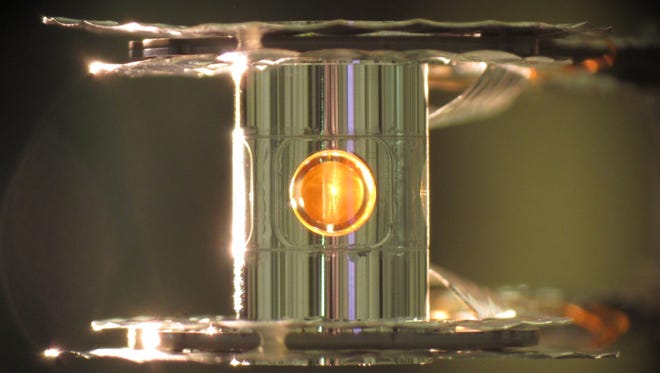
This undated image provided by the Lawrence Livermore National Laboratory shows a deuterium and tritium capsule, sphere in window at center, inside a cylindrical hohlraum container about 0.4 inches tall. In research reported Wednesday, Feb. 12, 2014 by the journal Nature, scientists say they've taken a key step toward harnessing nuclear fusion as a new way to generate power, an idea that has been pursued for decades. In tests, 192 laser beams briefly fired into the small gold cylinder which held the two kinds of hydrogen. The energy from the lasers kicked off a process that compressed the ball by an amount akin to squeezing a basketball down to the size of a pea. That created the extremely high pressure and temperatures needed to get the hydrogen atoms to fuse.
Eddie Dewald, AP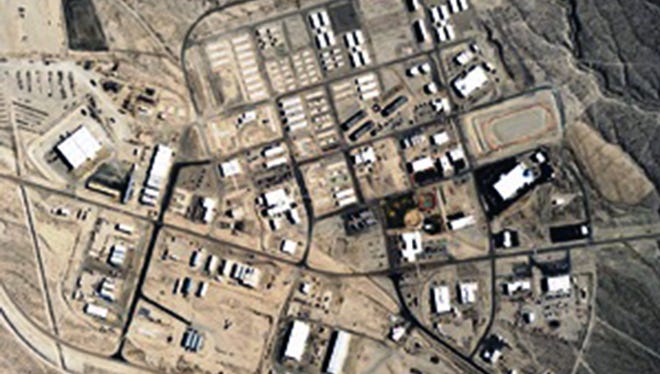
The Nevada National Security Site, created in 1951 as the Nevada Proving Grounds, encompasses more than 1,250 square miles in southern Nevada and was used to test atomic bombs. This satellite view, taken July 30, 2012, shows Mercury, Nev., a town at its peak in the 1950s inside the closed-to-the-public site.
National Nuclear Security Administration Via Flickr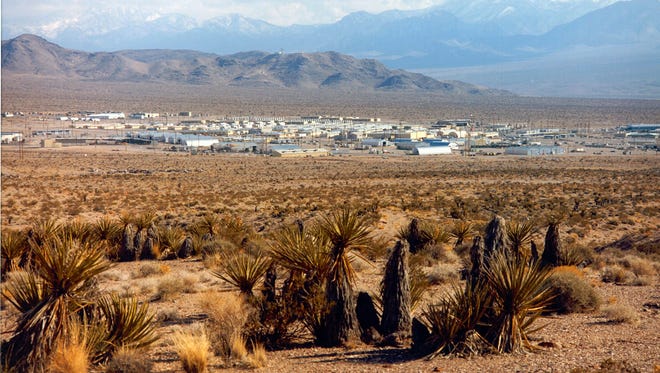
Mercury, Nev., about 65 miles northwest of Las Vegas, is a town inside what is now called the restricted-access Nevada National Security Site that served thousands of workers during the heyday of atomic weapons testing. Now about 1,000 employees of the former Nevada Test Site commute in by bus and stay overnight only when necessary.
Nevada National Security Site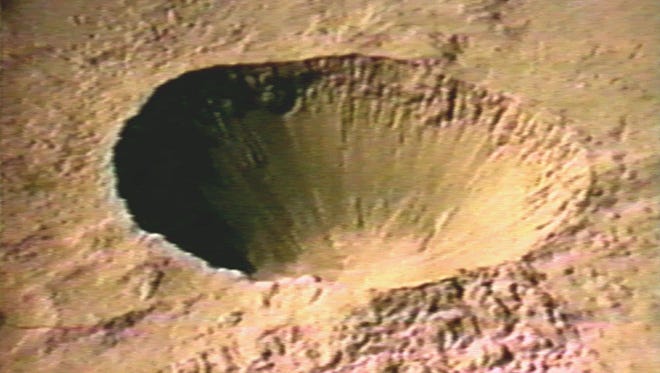
The 1,280-foot-diameter, 320-foot-deep crater created during Project Sedan atomic bomb testing is seen July 6, 1962, in this image from a U.S. Department of Energy video released in 1996. The 104-kiloton blast was one of several nuclear explosions detonated during the early years of the cold war at the Nevada Test Site, now called the Nevada National Security Site, about 125 miles northwest of Las Vegas.
U.S. Department Of Energy Via AP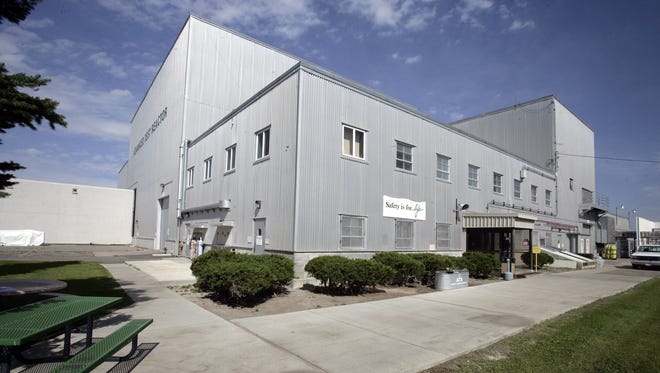
The Idaho National Laboratory, one of the nation’s first nuclear research labs, was built in the desert for a reason. Its founders wanted isolation as they experimented with the new technology of splitting atoms as happened in the Advanced Test Reactor building.
Idaho National Laboratory Via AP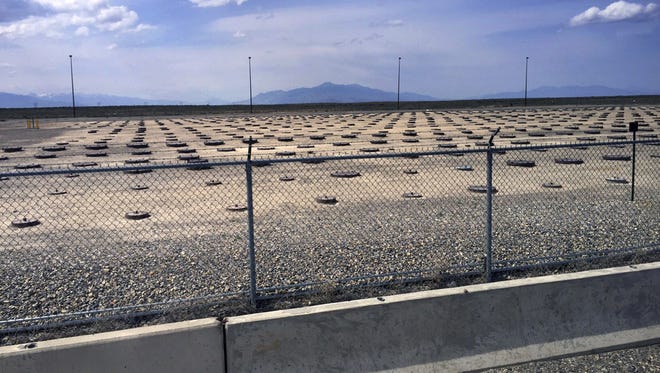
Nuclear waste is stored in underground containers at the Idaho National Laboratory near Idaho Falls, Idaho, in this August 2015 photo.
Keith Ridler, AP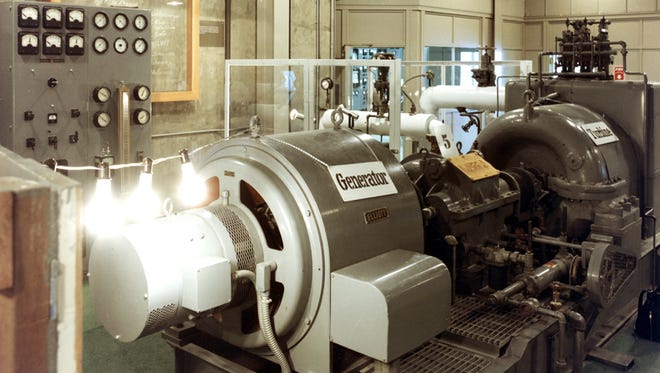
Experimental Breeder Reactor I at Idaho National Laboratory near Idaho Falls, Idaho, in 1951 became the first nuclear reactor in the world to generate electricity from atomic energy. The INL’s sophisticated nuclear research draws scientific visitors from all over the world, but the facility also offers a tour of the EBR-I reactor building to members of the general public.
Idaho National Laboratory Via AP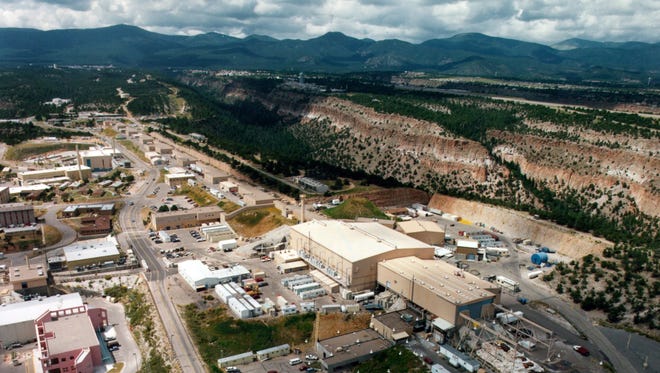
The National Nuclear Security Administration decided in early 2017 not to grant an extension of Los Alamos National Security's contract to run the Los Alamos National Laboratory, seen here from the air in 2015. It is located about 50 miles northeast of Albuquerque.
The Albuquerque Journal Via AP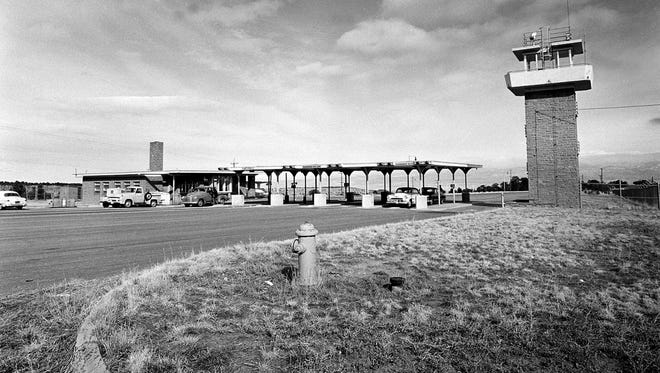
A Feb. 25, 1955, view of the main gate to the Los Alamos National Laboratory in New Mexico, where scientists developed and tested the first atomic weapon.
AP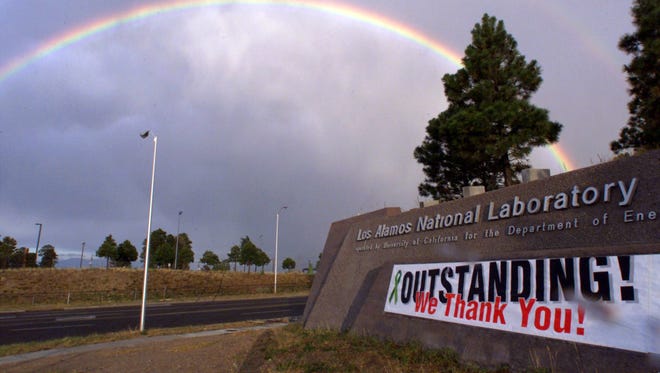
A rainbow hangs over the Los Alamos National Laboratory near Los Alamos, N.M., in June 2000.
Emmanuel Lozano, The Arizona Republic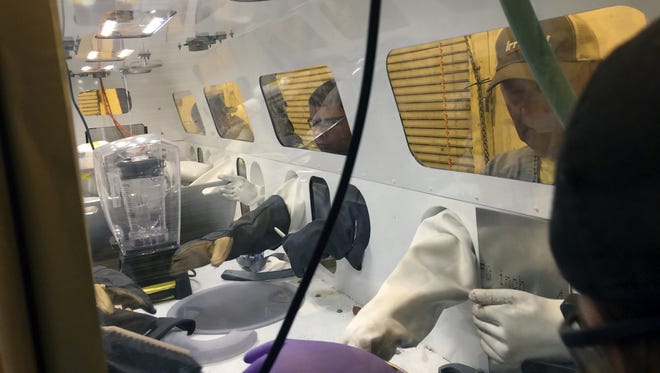
Technicians at Los Alamos National Laboratory near Los Alamos, N.M., practice treating drums of remediated nitrate salts in early 2016. The lab expects to complete treatment of 60 containers of radioactive waste that were inappropriately packed at one of the nation's premier nuclear weapons laboratories by summer 2017.
U.S. Department Of Energy Via AP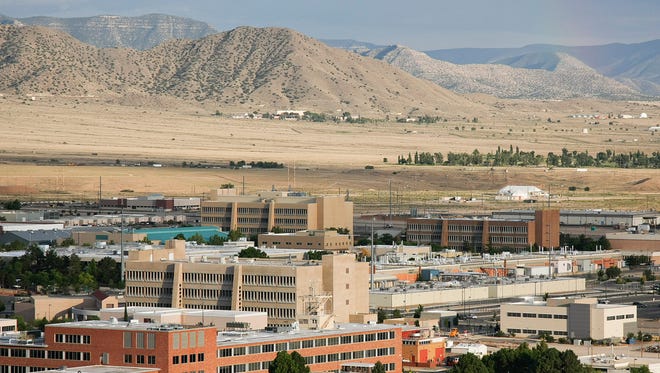
Sandia National Laboratories, whose main Albuquerque campus is shown here, went under management of a new government contractor that is a Honeywell subsidiary in May 2017.
Sandia National Laboratories Via Flickr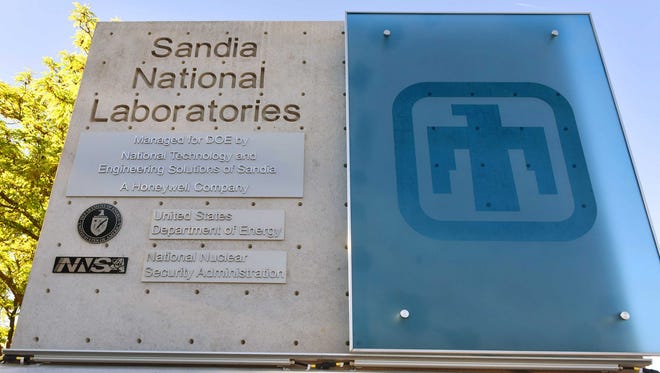
Most of the 10,000 employees of Sandia National Laboratories work at its main campus in Albuquerque, N.M., but it has a second laboratory in Livermore, Calif.
Sandia National Laboratories Via Flickr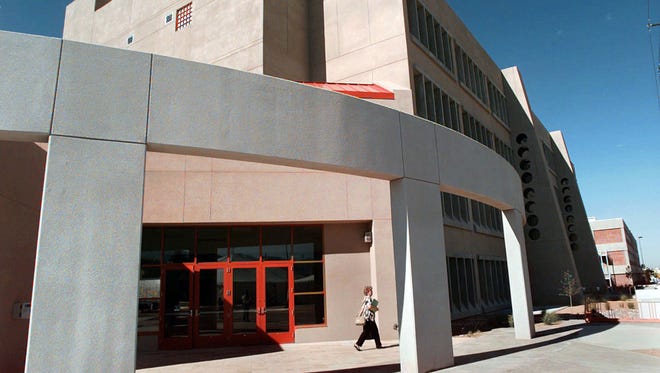
In addition to weapons development, the campus of Sandia National Laboratories in Albuquerque is the site of the Center for National Security and Arms Control , which opened Aug. 27, 1997. Work in the building involves cooperative arms control, stopping nuclear proliferation and keeping weapons out of the hands of terrorists.
Eric Draper, AP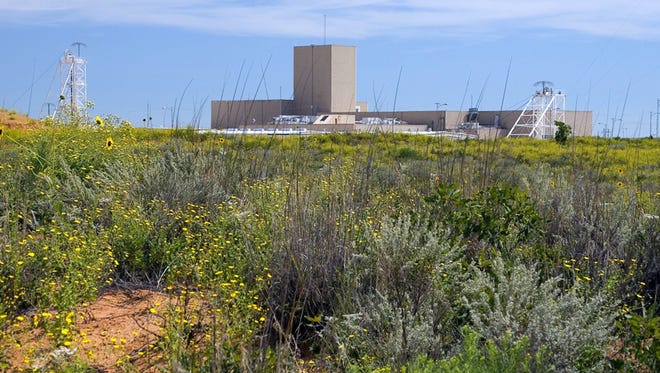
The Waste Isolation Pilot Plant near Carlsbad, N.M., stores nuclear waste from the research and production of nuclear weapons in an ancient salt bed almost a half mile underground. Its first shipment arrived March 26, 1999.
Dirk Roberson, U.S. Department Of Energy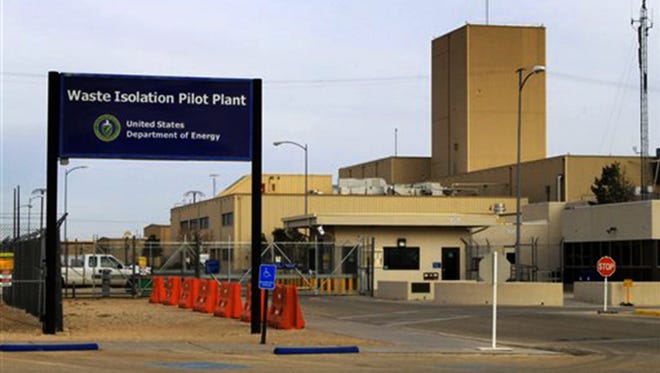
The Waste Isolation Pilot Plant near Carlsbad, N.M., was shut down for nearly three years from 2014 to early 2017 after improperly packaged nuclear waste from Los Alamos National Laboratory leaked inside its salt caverns.
Susan Montoya Bryan, AP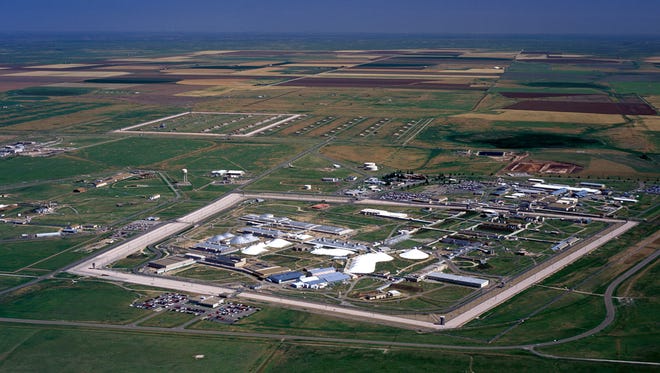
The Pantex Plant near Amarillo, Texas, assembles and dismantles many of the United States' nuclear weapons. It opened in 1942 before the U.S. had atomic weapons.
National Nuclear Security Administration Via Flickr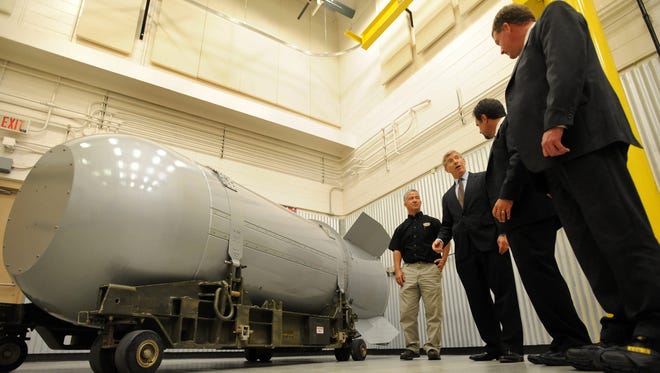
A weapons trainer talks to U.S. Energy Department officials Oct. 25, 2011, during an event commemorating the dismantling of the final B53 nuclear bomb at the Pantex Plant in Amarillo, Texas.
Roberto Rodriguez, The Amarillo Globe News Via AP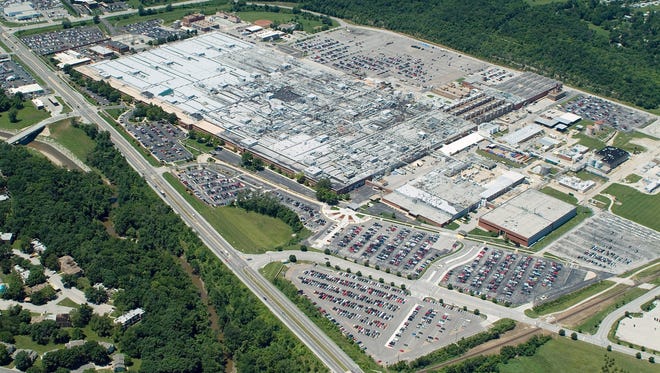
The original Kansas City Plant, vacated in 2014, had its origins in a 1942 Pratt & Whitney airplane engine factory that was repurposed in 1949 to build the non-nuclear components of nuclear warheads.
National Nuclear Security Administration Via Flickr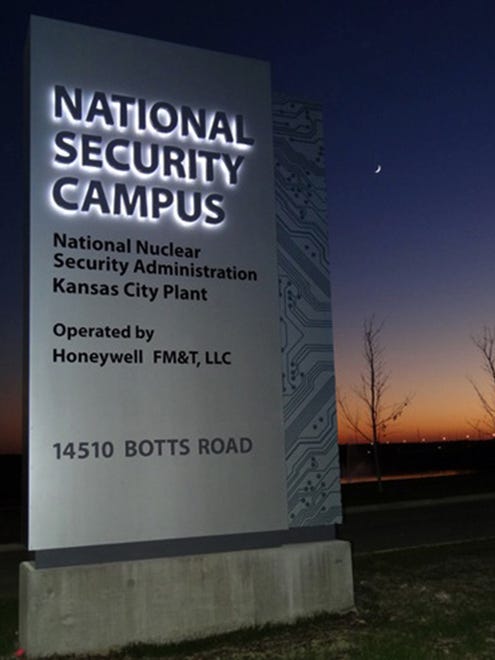
A deal to move the Kansas City Plant to a smaller, more modern, more energy-efficient site was finalized in 2009. Almost four years later, contractors began moving offices and equipment to the new campus near Grandview, Mo., and the northern edge of now-closed Richards-Gebaur Air Reserve Station.
National Nuclear Security Administration Via Flickr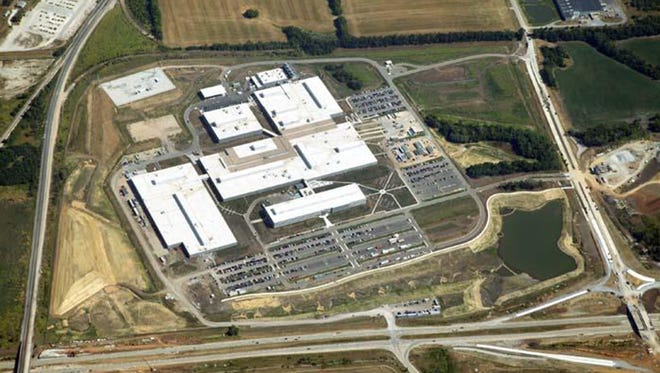
An aerial view of the western portion of the Kansas City National Nuclear Site, under construction July 17, 2012, near Grandview, Mo. It opened in 2014.
National Nuclear Security Administration Via Flickr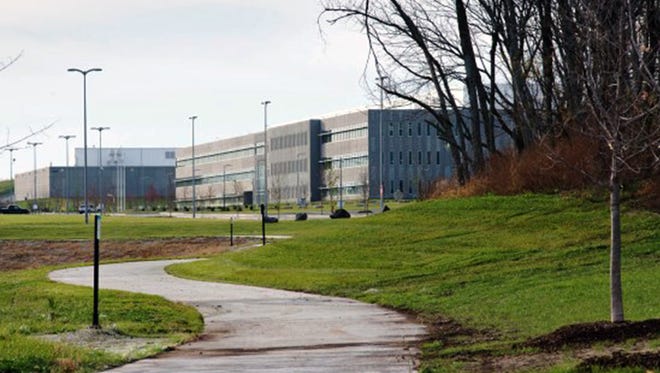
What was known as the Kansas City Plant began its move in January 2013 to the new Kansas City National Security Campus, about 20 miles south of Kansas City, Mo. The new campus, which researches and produces the non-nuclear components of nuclear warheads and other national defense systems, was dedicated in August 2014.
National Nuclear Security Administration Via Flickr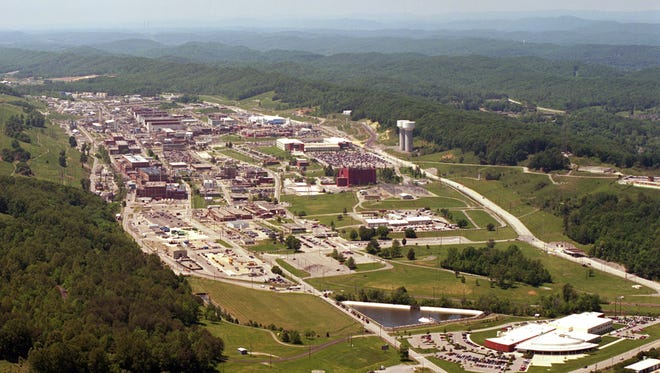
The Y-12 National Security Complex in Oak Ridge, Tenn., began operating in November 1943 to enrich uranium for the first atomic bombs as part of the Manhattan Project.
National Nuclear Security Administration Via Flickr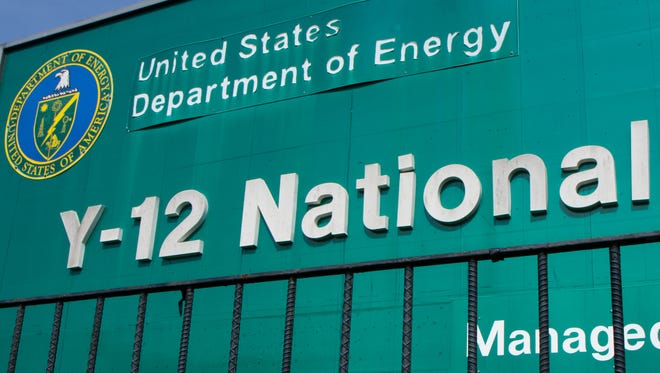
The Y-12 National Security Complex is seen Aug.17, 2012, in Oak Ridge, Tenn., about 20 miles northwest of Knoxville, Tenn.
Erik Schelzig, AP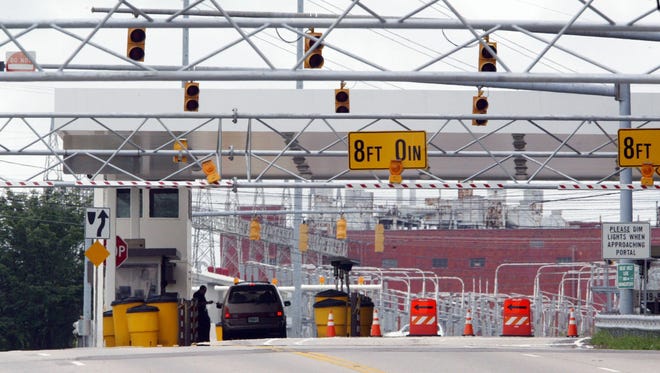
A guard checks identification July 2, 2004, of a driver entering the Y-12 nuclear weapons plant in Oak Ridge, Tenn. Y-12 is the main storehouse for bomb-grade uranium.
Wade Payne, AP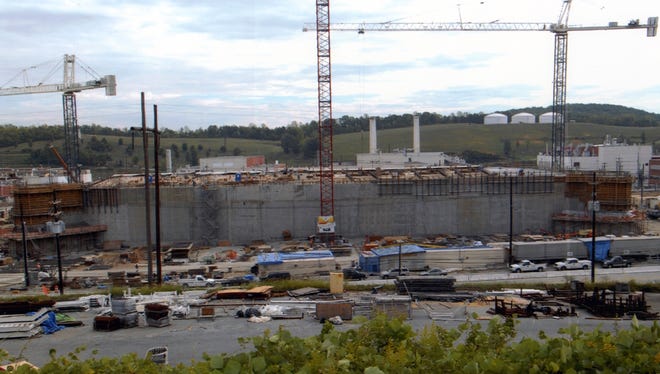
In October 2007, Department of Energy contractor Babcock & Wilcox was building a $549 million fortress-like storage building for highly enriched uranium at the Y-12 nuclear weapons plant in Oak Ridge, Tenn. Y-12 is this country's primary storehouse for bomb-grade uranium. The new storehouse was expected to be in operation by 2012.
Babcock & Wilcox Via AP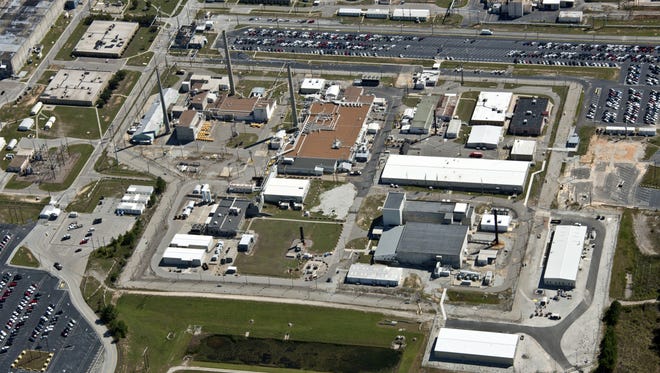
More than 10,000 employees work at the Savannah River Site in South Carolina about 25 miles southeast of Augusta, Ga. Its plutonium and uranium extraction operations, part of the United States' nuclear weapons program, began in late 1952.
National Nuclear Security Administration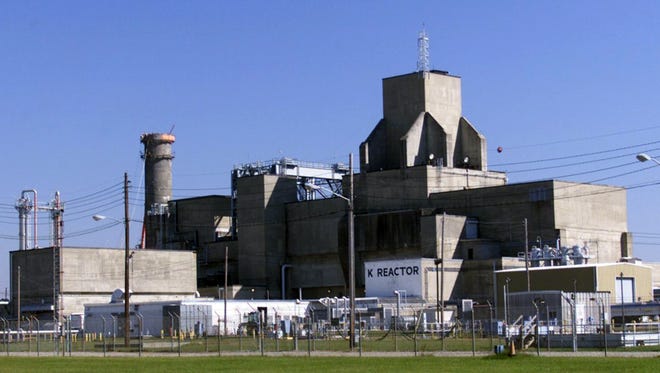
A former reactor at the Savannah River Site nuclear reservation in South Carolina, about 25 miles southeast of Augusta, Ga., is one of two on the 310-square-mile site that now is used to consolidate and store nuclear materials. The K Reactor building, shown Nov. 29, 1999, stores plutonium.
Bart Boatwright, The Greenville News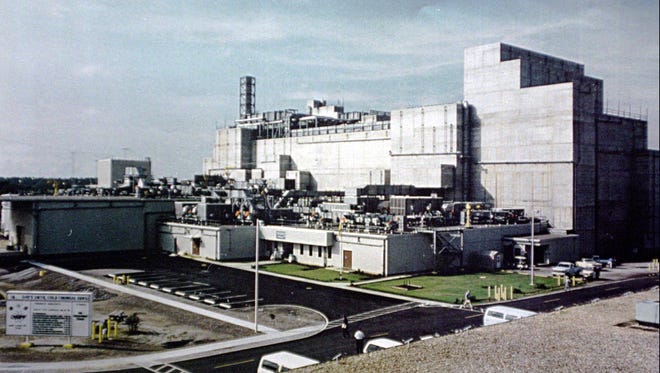
In a ceremony March 12,1996, radioactive waste processing began at the Defense Waste Processing Facility at the Department of Energy's Savannah River Site, the largest waste vitrification plant in the world, transforming radioactive liquid waste into glass for safe disposal and storage.
Savannah River Site Via AP